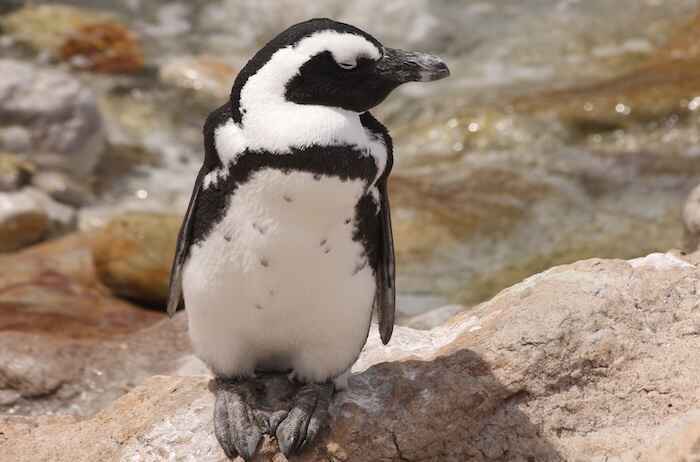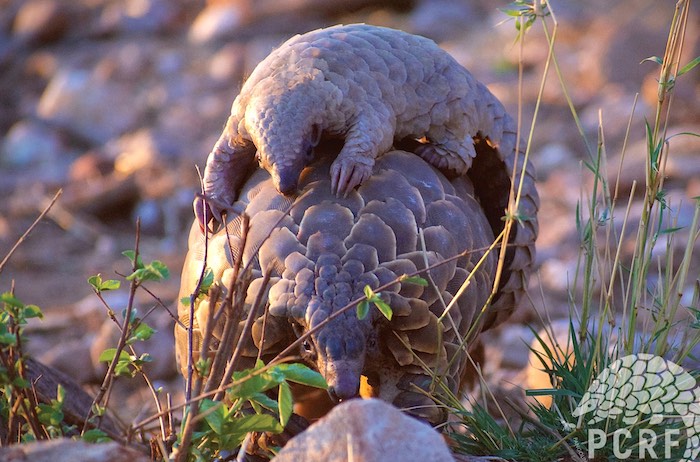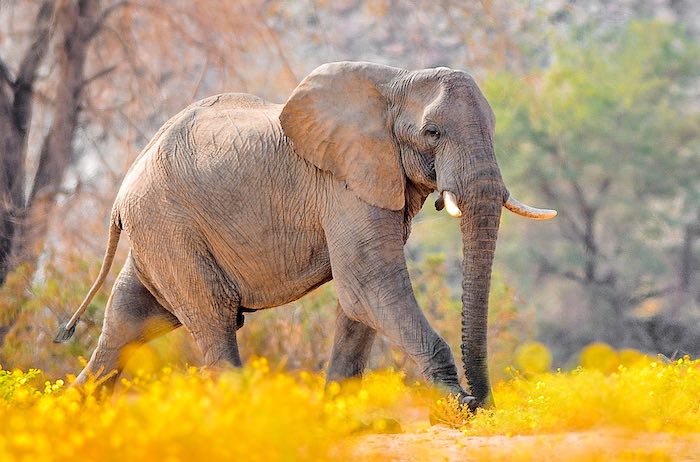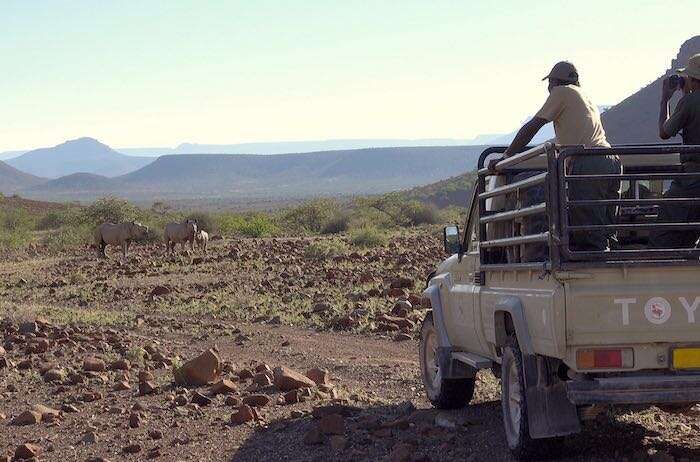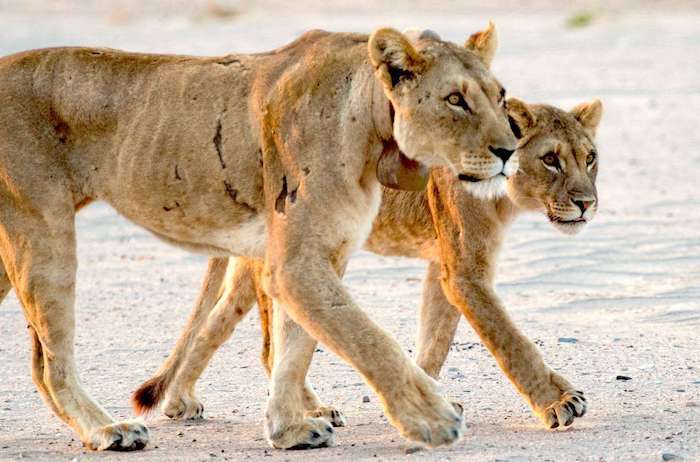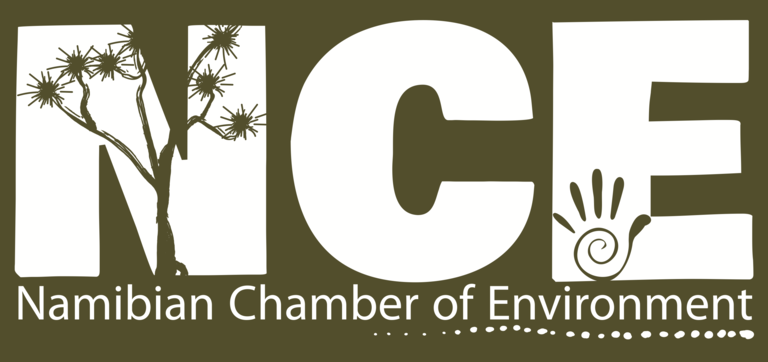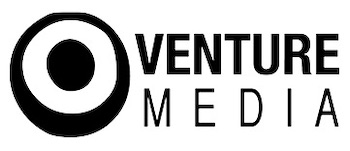
A River in Trouble
9th September 2021
As you float upon translucent water moving at the timeless pace of Africa, you can see Kalahari sand sliding beneath darting shoals of fish, and hear the grunt of hippos lurking in deeper pools of the river. Elephants congregate at the water's edge, while red lechwe dance through the shallows and a host of antelope graze on the floodplains beyond the river channel's hedge of papyrus. Fish eagles cry out above you, while African jacanas balance precariously on the lily pads floating around your traditional dugout canoe, known as a mokoro.
Those who have been there will instantly recognise this tranquil, verdant scene – the Okavango Delta. The Delta is a tourist's paradise and a conservationist's dream: a UNESCO World Heritage site and a RAMSAR wetland that hosts critically important populations of mammals, special wetland birds and innumerable fish and amphibians. As one of the largest tracts of relatively intact wilderness areas in Africa, the importance of the Okavango Delta cannot be overstated.
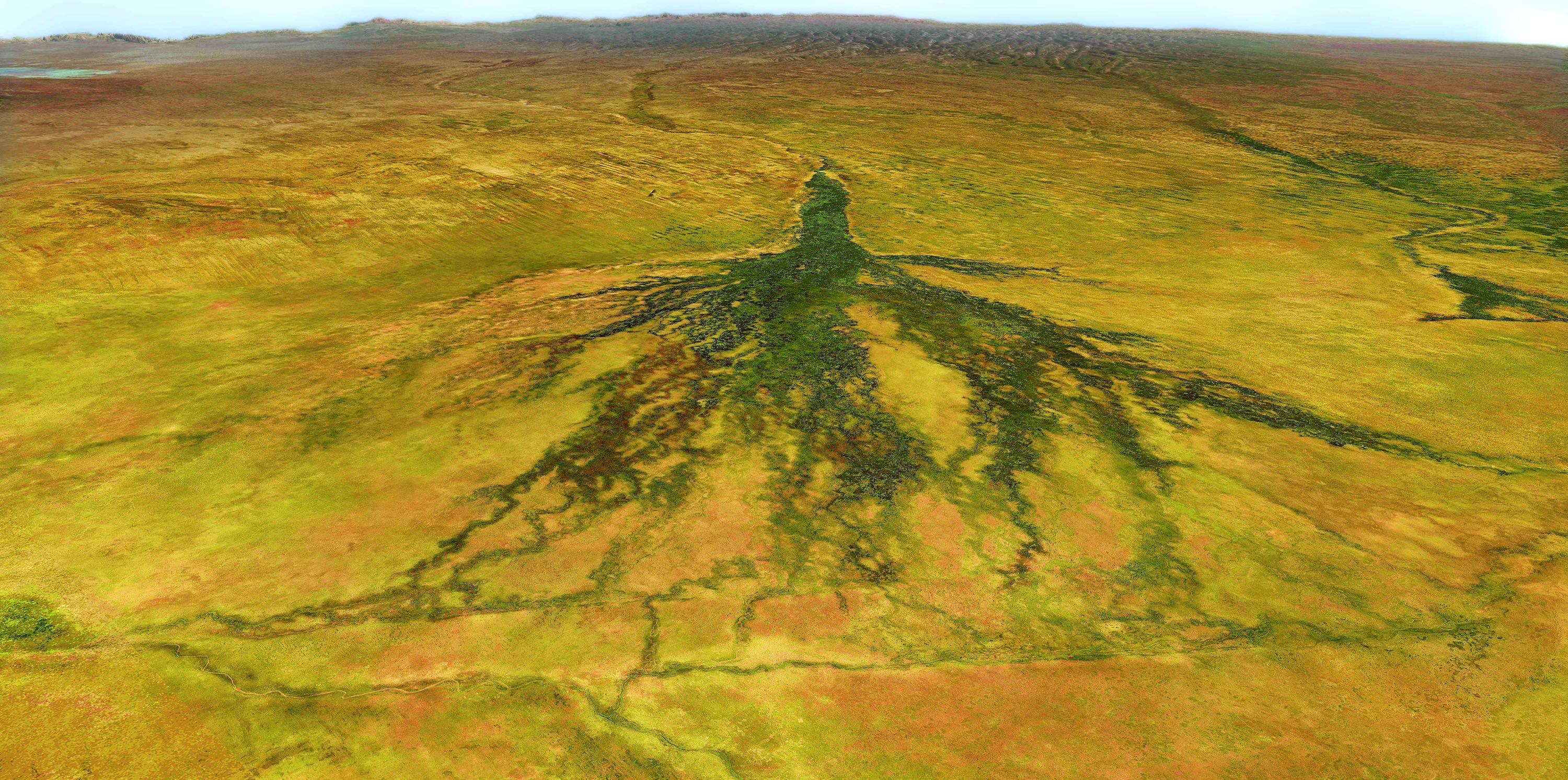
Understanding the Okavango Delta
The Delta is so vast and natural that it is easy to become complacent about its protection. Yet as magical as it seems, this wetland does not just appear from nowhere. The water that spreads out like a many-fingered hand that eventually evaporates or sinks into the Kalahari sands in Botswana has travelled over 1,000 km from the highlands of central Angola and then along the border of Namibia. Consequently, what happens to the rivers in Angola and Namibia can threaten the health of the Okavango Delta in Botswana.
The two main river systems that feed the Delta are the Cubango (which is called the Kavango in Namibia, and Okavango in Botswana) and the Cuito. The Cubango River is primarily responsible for the seasonal or pulsing floods experienced in the Delta, while the Cuito provides a steadier flow year-round.
Water from rain falling in the Cubango's upper catchment takes about a month to reach the Delta, normally arriving as distinct pulses and sometimes as floods when central Angola has good rain. Over the next four months, large areas of dry land beyond the Delta's permanent swamps are inundated. Life in these seasonal floodplains then explodes. Plants germinate and grow, the eggs of all kinds of tiny aquatic animals hatch, frogs emerge from the ground beneath, fish swim in to feed and spawn, birds fly in to feed and nest, and all sorts of mammals arrive to feast and fatten. Vegetation in the seasonal floodplains is a critical resource for the Delta's life. Indeed, it is during the rising and falling of these periodic floods that much of the Delta's rich biodiversity is produced.
The Cubango/Okavango River is thus very much the lifeblood of the Okavango Delta. If the pulses of this river are reduced or polluted, the consequences for the rich biodiversity and related lucrative tourism industry in Botswana are dire. Yet the Cubango/Okavango River is virtually unprotected in Angola and Namibia, which leaves it open to exploitation and contamination before it reaches Botswana. And pressures on the Cubango/Okavango are much greater than on the Cuito, mainly because access to the Cubango/Okavango is easiest and this is where most people live in those areas of Angola and Namibia.
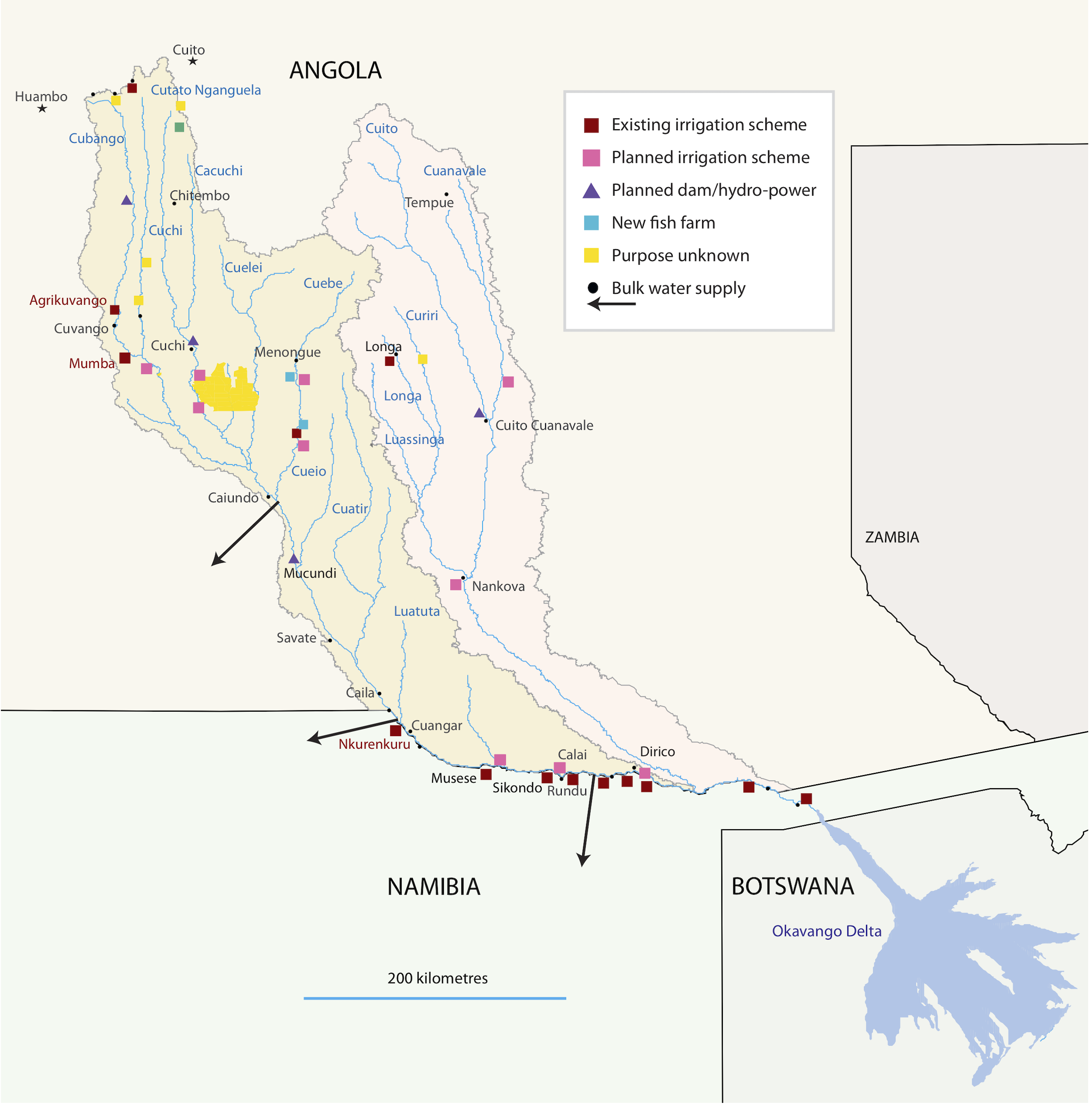
Some of these impacts are so large that they are easily seen on satellite images – crop fields that are irrigated using centre pivot spraying systems can be counted and measured. We have done this exercise several times and recorded an expansion of these irrigated lands from 1,100 hectares in 2003 to 6,420 hectares in 2020. It will be more now in 2021, as made clear by the examples of expansion by five large irrigation schemes shown in the images below. The total area under irrigation in these five schemes increased from about 300 hectares in 2011 to about 3,100 hectares in 2021, thus becoming 10 times larger in just 10 years.
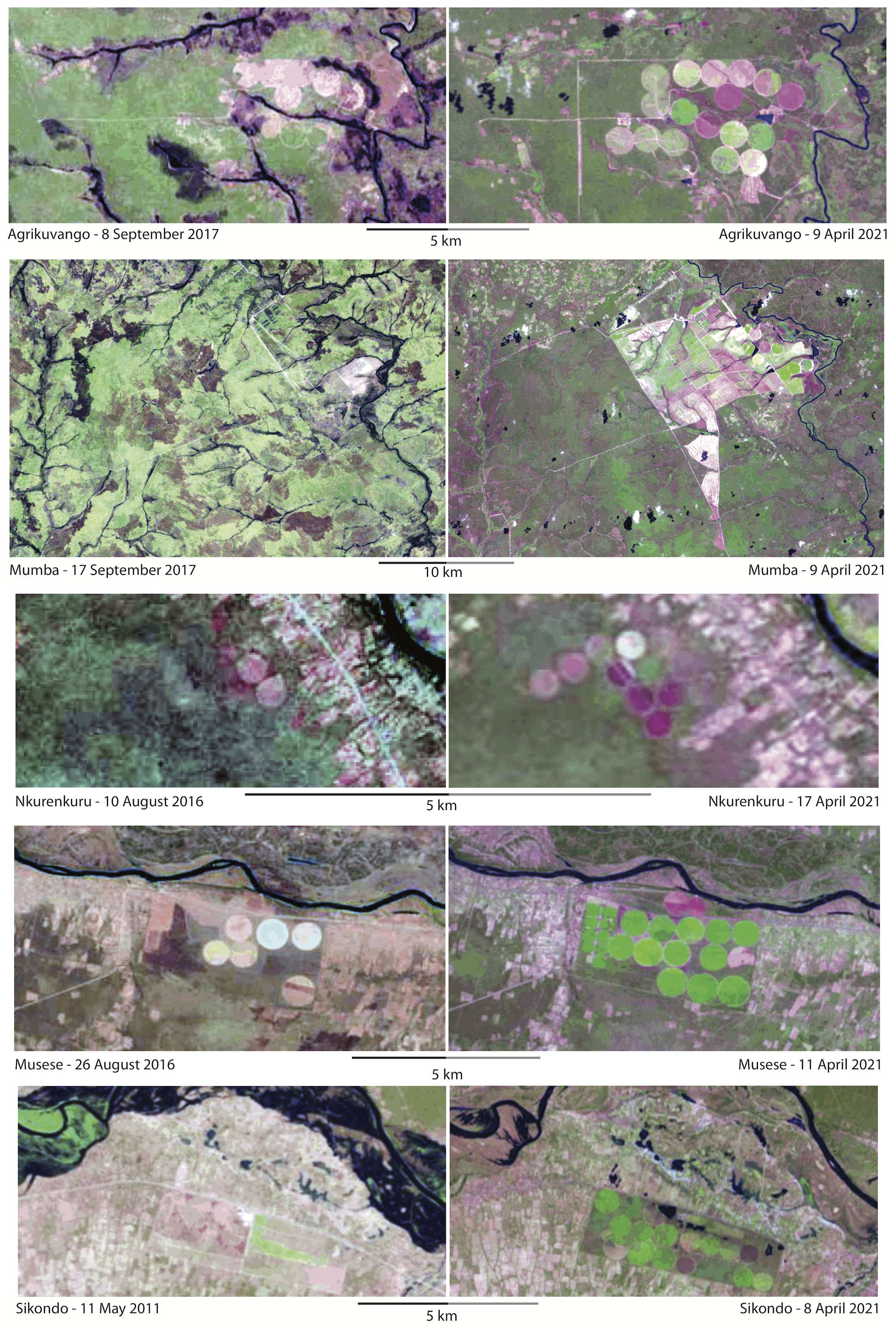
Among the developments in Angola are plans to establish and irrigate an eye-watering 221,000 hectares of farmland in future. Water offtakes for irrigation would entirely drain the Cubango during the dry months of the year. A large dam may be built at Mucundi to store summer rainwater, which might then be released to allow some water into the Cubango/Okavango River during the dry season. Several other dams have been planned in Angola, mainly to generate hydroelectricity. Other plans include pumping Cubango/Okavango water into the Cuvelai Basin by both Angola and Namibia, which often also considers piping water to Windhoek and other parts of central Namibia.
Rural people throughout the Cubango/Okavango River Basin are rapidly moving towards urban centres in search of cash incomes and better living standards. This movement is revealed by the estimated annual growth rates for the towns of Calai (11%), Cuvango (12%), Menongue (7%) and Rundu (4%) during the last 10-20 years. This is good, for two reasons: their livelihoods improve and pressures on natural resources in rural areas will decline, at least in certain areas. However, as people concentrate in towns along the rivers, bulk water offtakes for urban centres will increase rapidly.
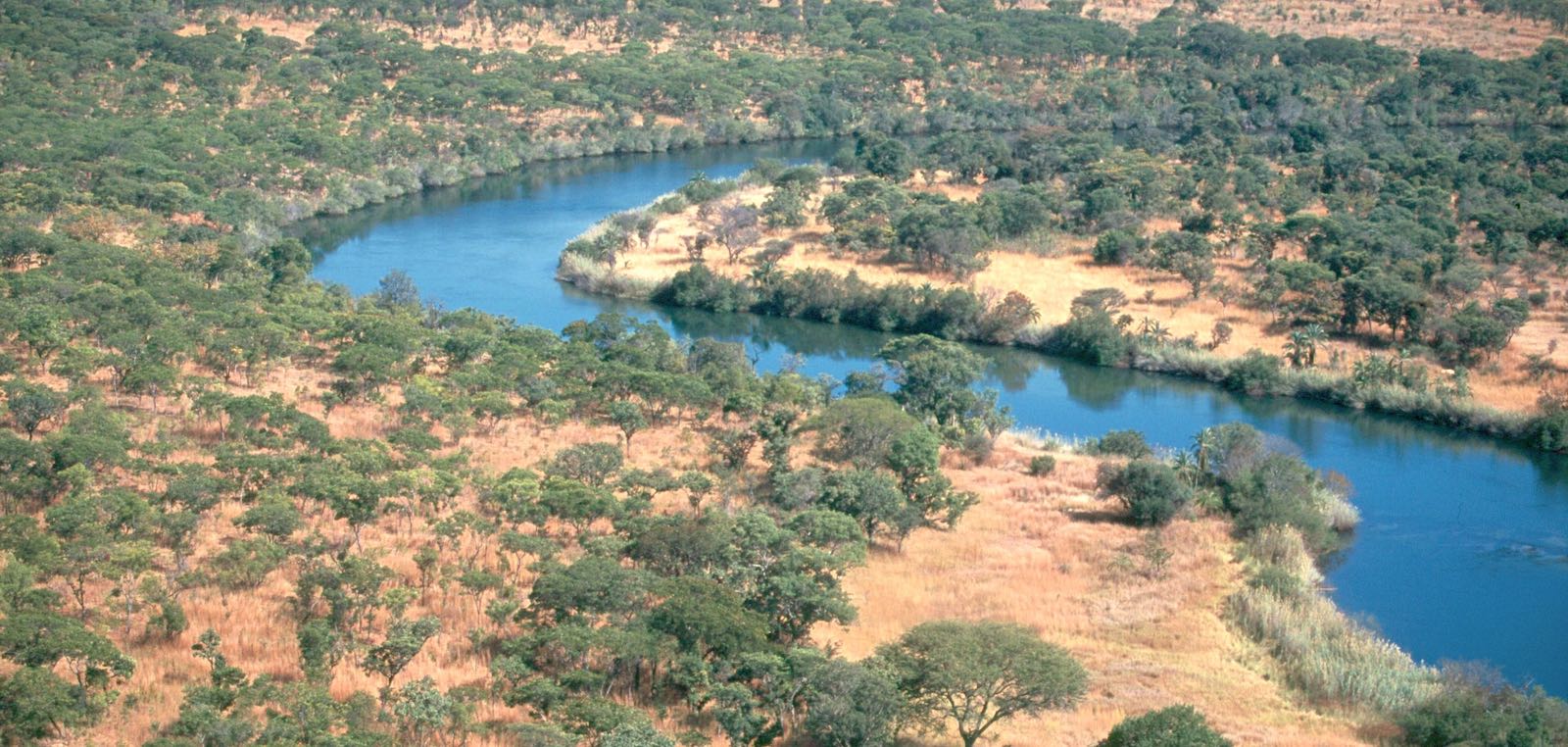
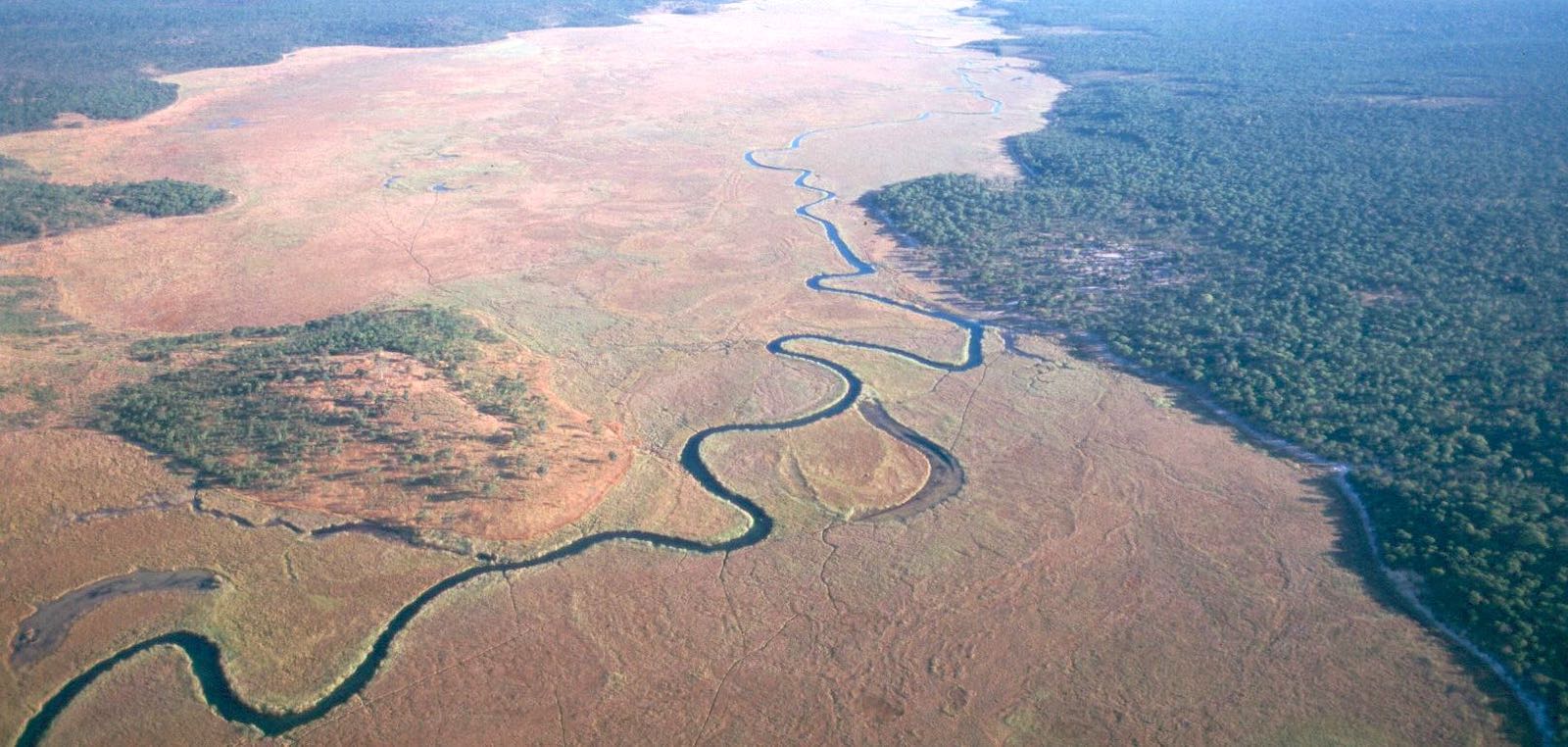
What we do and don't know about threats to the Okavango
Information on the distribution of existing development projects and the expansion of irrigated agriculture is clear. Lots of water is being taken from the Cubango/Okavango, and the amounts will increase. Of that we can be sure, and the alarm bells should already be ringing. But there is more to worry about.
First, no one knows how much water is cumulatively being taken by all the irrigation schemes, towns and other offtakes, such as for schools, lodges, small horticultural enterprises and hospitals. More critically, what proportion of all the river water is removed? What impact does this have on downstream life: plants, animals, and people?
Second, what pesticides and fertilisers are washed out of the big agricultural projects into the rivers, and how do the chemicals affect life downstream? No data of any substance is available to answer those questions.
Third, what pollution is produced by towns, from effluent, industrial waste and the accumulation of garbage that clogs so many tributary valleys? What chemicals predominate and how do these and other pollutants affect people, animals and plants downstream? Again, little or no information appears to be available.
Fourth, what effect will large dams have on the pulses of Cubango/Okavango water that maintain the production of biodiversity in the Delta?
Fifth, how do abstractions affect the rivers when rainfall is low? The most recent summer of 2020/2021 is a case in point. Rainfall over central Angola was unusually low, and the volumes of water measured at Rundu were extremely low, indeed about as low as ever recorded. The simple answer is that the low levels were due to the absence of rain. But we also know that irrigated areas upstream of Rundu expanded at least 10 times in the last 10 years. And we can expect that these fields were irrigated with more water over longer periods during the hot, dry weather that persisted during the summer. Perhaps double, triple or more water was taken from the Cubango/Okavango than 10 years ago? Who knows? Who cares!
Given that it is the lifeline that supports much of the life, production and economy of Kavango West, Kavango East and the Okavango Delta, why do we know so little about water flows, abstraction and contamination in the Cubango/Okavango River? This is where the alarms should start yelling.
The most obvious answer is that we don't care. If we, our public representatives (aka politicians), and civil servants did care, information would be at hand, the cumulative impacts of developments could be assessed, and development might proceed in a more orderly and environmentally healthy fashion. While the environmental impacts of certain developments may be assessed and their individual effects may be modest, no effort is made to assess cumulative impacts. Which of these straws will break the camel's back?
A more sinister cumulative effect is of grave concern: each development degrades the real and perceived value of the Cubango/Okavango River, and creates yet more precedents for further developments. H.T. Odum, the great ecologist, called this the tyranny of small decisions
. Concerns, alarms and protests progressively get muted. The more broken the river, the harder it is to find fault or to fix, and the easier it is to accept further breakages.
These days much attention is paid to the impacts of climate change, while recent exploration for oil and gas has generated howls of protest. Such concerns are valid. But they target possible threats that are much more remote in time and space than the impacts that are now escalating and that are now visible.

For the future
Several things seem necessary. First, there is a need for more care and more public awareness. National Geographic's pioneering Okavango Wilderness Project is a good example of what is needed to create much-needed publicity. Nonetheless, its focus has been on south-eastern Angola's Cuito, Cuando/Kwando and western Zambezi rivers where pressures are very much lower than on the Cubango/Okavango. The Cuito's ecological contributions to the Delta are also quite different from those of the Cubango/Okavango.
Second, answers are needed to the questions, puzzles and concerns raised here. Monitoring the river is a necessity. These are the responsibilities of the governments of Angola, Namibia and Botswana, and of the Permanent Okavango River Basin Water Commission (OKACOM) established 27 years ago in 1994. OKACOM's role in making the monitoring data public and advertising any changes to the flows of water is critical since data kept in government offices may serve little purpose.
Third, government policies and procedures in Angola and Namibia need to be revised to move away from present practices where land and water is free for influential developers
in Angola, environmental assessments are lacking or meaningless, and the production of low value cereals is seen as the best use of high value Cubango/Okavango water.
Fourth, ways should be found for Angola to benefit in substantial ways from the downstream use of water released from its catchments.
There is a Hole in the Bucket is a wonderful children's song. Of its 17 lines, the first is about the discovery of a leak in the bucket. The remaining lines explore the steps needed to fix the leak. In the case of the Cubango/Okavango River, we are only starting to ponder the first line. One wonders how long it will take to complete the song, and what Okavango water will remain to fill the bucket!
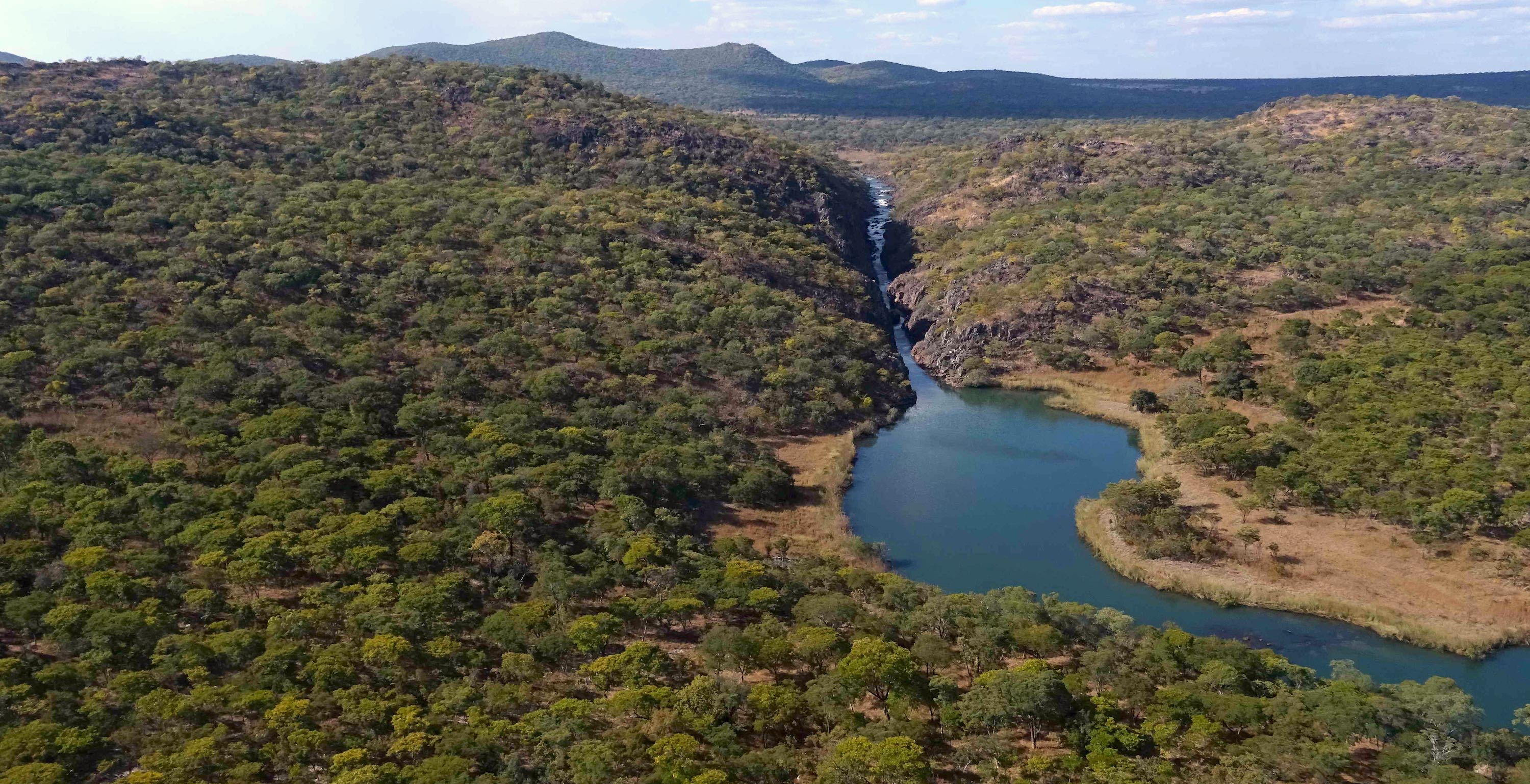
Further reading:
John Mendelsohn and Antonio Martins River catchments and development prospects in south-eastern Angola.
[Click to view PDF of journal article]
John Mendelsohn and Cornelis Vanderpost Okavango Delta: Floods of Life.
[Click to view book details]
For articles on similar topics, please click one of the following options:
If you enjoyed this page, then you might also like:
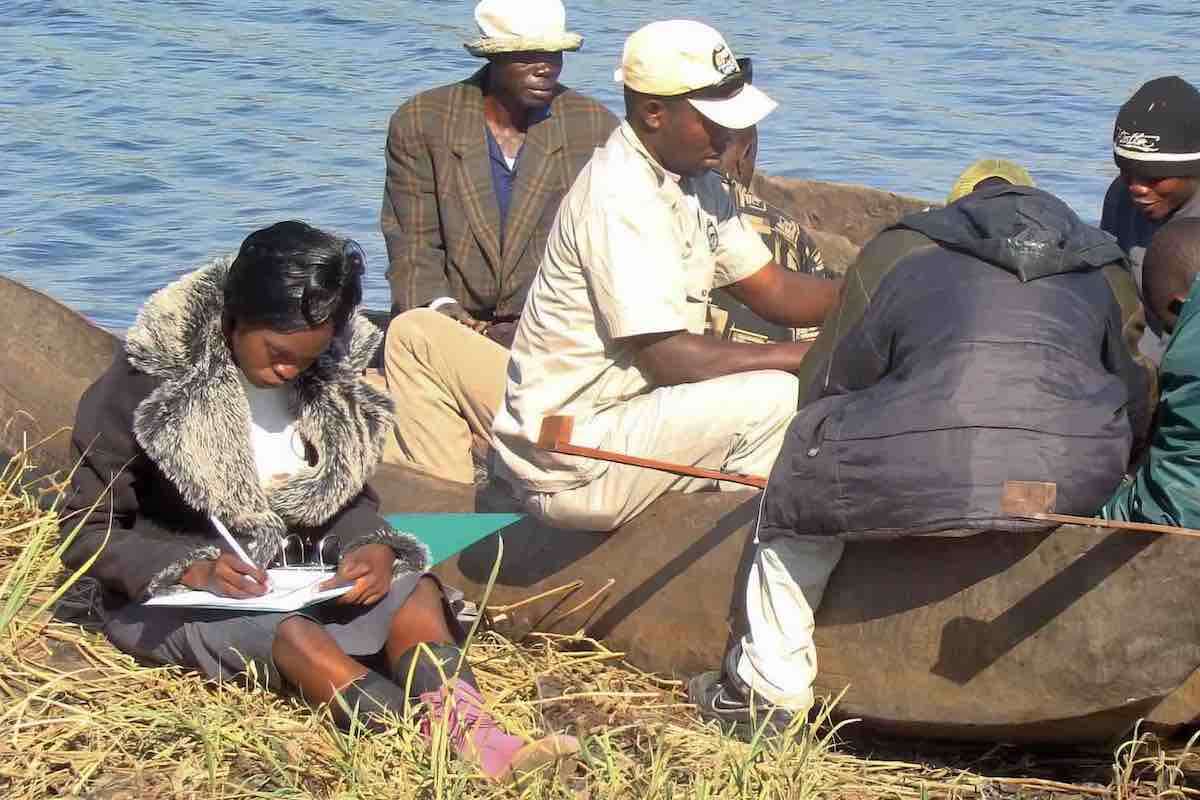
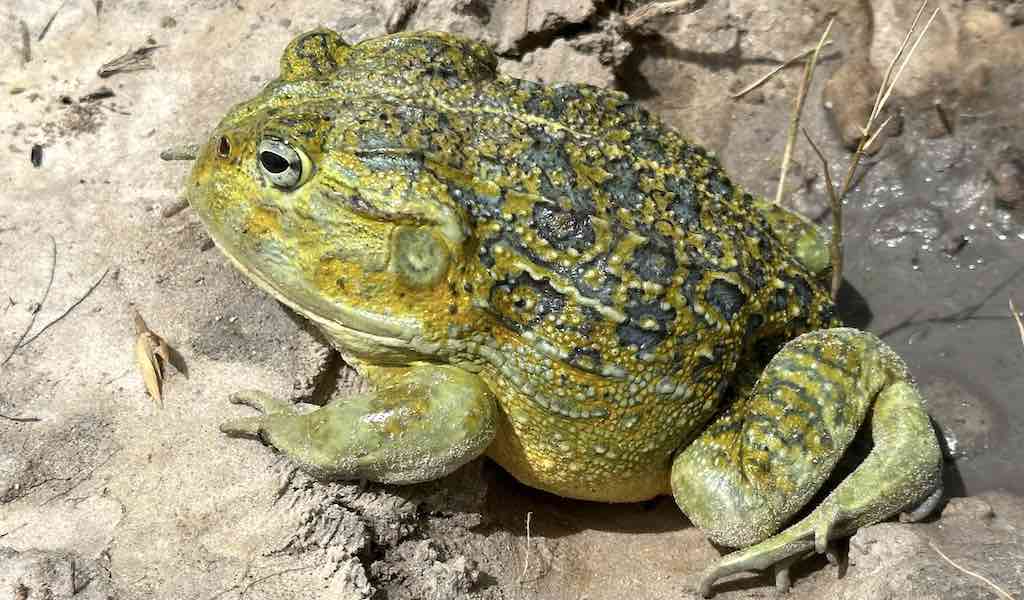

For more great articles from Conservation Namibia see below...
Conservation Namibia brought to you by:
We use cookies to monitor site usage and to help improve it. See our Privacy Policy for details. By continuing to use the site, you acknowledge acceptance of our policy.
